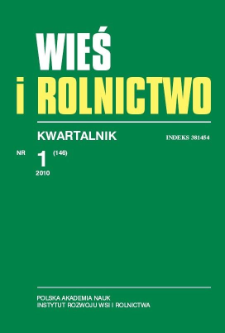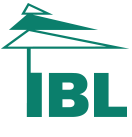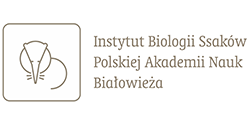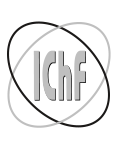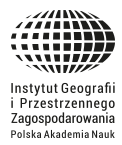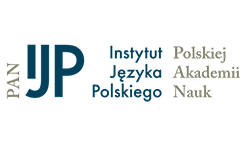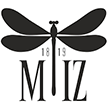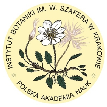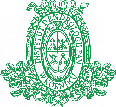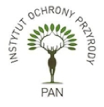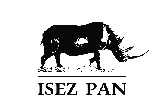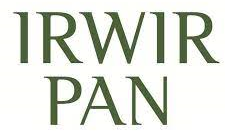- Search in all Repository
- Literature and maps
- Archeology
- Mills database
- Natural sciences
Advanced search
Advanced search
Advanced search
Advanced search
Advanced search

Object
Title: Legal Position of Rural Communes in the Procedure of Delimitation and Protection of the Natura 2000 Areas
Publisher:
Instytut Rozwoju Wsi i Rolnictwa Polskiej Akademii Nauk
Place of publishing:
Type of object:
Abstract:
The aim of the paper is to present the legal status of a rural commune in the process of formation and protection of a Natura 2000 area. The paper is divided into four parts. The first part deals with the place of environmental protection in the activity of public authorities, especially of local councils. The second part of the paper presents arguments in favour of distinguishing a rural commune from among other types of communes which in legal terms form a fairly uniform category. The third part deals with the legal essence of the Natura 2000 areas and characterises the processes of their formation. The fourth part of the paper describes legal instruments that can be used by communes in dealing with the issue of Natura 2000 areas. The participation of communes in the creation of Natura 2000 areas is based on planning and advisory instruments. As far as the protection of the already established areas is concerned decision instruments connected with the implementation of definite undertakings play the key role. The executive organ of a commune can participate in this process at the preliminary stage when environmental determinants of a given undertaking are being discussed but it also can be the author of a decision indispensable to implement a definite project. It can also happen that the executive organ of a commune will take no part in the issue of any of the earlier described decisions despite the fact that a project is to be implemented on the territory of that commune. Such situation leads to the question about the position of the executive organ – does it have the legal status of a party? The paper does not cover all aspects of the problem for its aim is to accomplish some sort of systematisation, to introduce some order and to show the problem in a broader perspective.
References:
Europejska Karta Samorządu Terytorialnego. Dz.U. z 1994 r. nr 124, poz. 607.
Habuda A., 2008: Pomocniczość w ochronie przyrody. Ochrona Środowiska. „Prawo i Polityka” 3.
Izdebski H., 2006: Samorząd terytorialny. Podstawy ustroju i działalności. Lexis Nexis, Warszawa.
Konstytucja RP z dnia 2 kwietnia 1997 r. Dz.U. z 1997 r. nr 78, poz. 483 ze zm.
Niewiadomski Z., 2009: Planowanie i zagospodarowanie przestrzenne. Komentarz. C. H. Beck, Warszawa.
Radecki W., 2008: Ustawa o ochronie przyrody. Komentarz. Diffin, Warszawa.
Saint-Quen F., 1991: Podział władzy w demokracji europejskiej. „Samorząd Terytorialny” 6.
Szpor A., 2001: Państwo a subsydiarność jako zasada prawa UE i w Polsce. „Samorząd Terytorialny” 1–2.
Ustawa z dnia 8 marca 1990 r. o samorządzie gminnym. Dz.U. z 2001 r. nr 142, poz. 1591 ze zm.
Ustawa z dnia 5 czerwca 1998 r. o samorządzie powiatowym. Dz.U. z 2001 r. nr 142, poz. 1592 ze zm.
Ustawa z dnia 5 czerwca 1998 r. o samorządzie województwa. Dz.U. z 2001 r. nr 142, poz. 1590 ze zm.
Ustawa z dnia 27 marca 2003 r. o planowaniu i zagospodarowaniu przestrzennym. Dz.U. z 2003 r. nr 80, poz. 717 ze zm.
Ustawa z dnia 16 kwietnia 2004 r. o ochronie przyrody. Dz.U. z 2004 r. nr 92, poz. 880 ze zm.
Ustawa z dnia 28 lipca 2005 r. o lecznictwie uzdrowiskowym, uzdrowiskach i obszarach ochrony uzdrowiskowej oraz o gminach uzdrowiskowych. Dz.U. z 2005 r. nr 167, poz. 1399 ze zm.
Ustawa z dnia 3 października 2008 r. o udostępnianiu informacji o środowisku i jego ochronie, udziale społeczeństwa w ochronie środowiska oraz ocenach oddziaływania na środowisko. Dz.U. z 2008 r. nr 199, poz. 1227 ze zm.
Relation:
Issue:
Start page:
End page:
Resource Identifier:
oai:rcin.org.pl:241819 ; doi:10.53098/wir.2010.1.146/04 ; 0137-1673 (print); 2657-5213 (on-line)
Source:
Language:
Language of abstract:
Rights:
Creative Commons Attribution BY 4.0 license
Terms of use:
Digitizing institution:
Institute of Rural and Agricultural Development of the Polish Academy of Sciences
Original in:
Library of the Institute of Rural and Agriculture Development of the PAS
Projects co-financed by:
Access:
Object collections:
- Digital Repository of Scientific Institutes > Literature > Journals/Articles
- Digital Repository of Scientific Institutes > Partners' collections > Institute of Rural and Agricultural Development PAS > Library collections
Last modified:
Mar 18, 2025
In our library since:
Jul 10, 2024
Number of object content downloads / hits:
0
All available object's versions:
https://rcin.org.pl./publication/278239
Show description in RDF format:
Show description in RDFa format:
Show description in OAI-PMH format:
| Edition name | Date |
|---|---|
| Pozycja prawna gminy wiejskiej w procedurze wyznaczania i ochrony obszarów Natura 2000 | Mar 18, 2025 |
Objects Similar
Guzal-Dec, Danuta Zwolińska-Ligaj, Magdalena
Śleszyński, Przemysław Bański, Jerzy (1960– ) Degórski, Marek Komornicki, Tomasz Więckowski, Marek (1971– )
Čok, Gregor Foški, Mojca Lamovšek, Alma Zavodnik Mrak, Gašper Jopek, Dorota Kochel, Laura Szlenk-Dziubek, Dorota
Nowak, Maciej J.
Bieniasz, Anna Gołaś, Zbigniew Łuczak, Aleksandra
Kozera, Agnieszka
Dzwonkowska-Godula, Krystyna
Kutkowska, Barbara Struś, Mirosław

 INSTYTUT ARCHEOLOGII I ETNOLOGII POLSKIEJ AKADEMII NAUK
INSTYTUT ARCHEOLOGII I ETNOLOGII POLSKIEJ AKADEMII NAUK
 INSTYTUT BADAŃ LITERACKICH POLSKIEJ AKADEMII NAUK
INSTYTUT BADAŃ LITERACKICH POLSKIEJ AKADEMII NAUK
 INSTYTUT BADAWCZY LEŚNICTWA
INSTYTUT BADAWCZY LEŚNICTWA
 INSTYTUT BIOLOGII DOŚWIADCZALNEJ IM. MARCELEGO NENCKIEGO POLSKIEJ AKADEMII NAUK
INSTYTUT BIOLOGII DOŚWIADCZALNEJ IM. MARCELEGO NENCKIEGO POLSKIEJ AKADEMII NAUK
 INSTYTUT BIOLOGII SSAKÓW POLSKIEJ AKADEMII NAUK
INSTYTUT BIOLOGII SSAKÓW POLSKIEJ AKADEMII NAUK
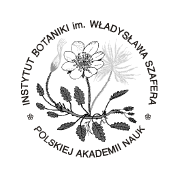 INSTYTUT CHEMII FIZYCZNEJ PAN
INSTYTUT CHEMII FIZYCZNEJ PAN
 INSTYTUT CHEMII ORGANICZNEJ PAN
INSTYTUT CHEMII ORGANICZNEJ PAN
 INSTYTUT FILOZOFII I SOCJOLOGII PAN
INSTYTUT FILOZOFII I SOCJOLOGII PAN
 INSTYTUT GEOGRAFII I PRZESTRZENNEGO ZAGOSPODAROWANIA PAN
INSTYTUT GEOGRAFII I PRZESTRZENNEGO ZAGOSPODAROWANIA PAN
 INSTYTUT HISTORII im. TADEUSZA MANTEUFFLA POLSKIEJ AKADEMII NAUK
INSTYTUT HISTORII im. TADEUSZA MANTEUFFLA POLSKIEJ AKADEMII NAUK
 INSTYTUT JĘZYKA POLSKIEGO POLSKIEJ AKADEMII NAUK
INSTYTUT JĘZYKA POLSKIEGO POLSKIEJ AKADEMII NAUK
 INSTYTUT MATEMATYCZNY PAN
INSTYTUT MATEMATYCZNY PAN
 INSTYTUT MEDYCYNY DOŚWIADCZALNEJ I KLINICZNEJ IM.MIROSŁAWA MOSSAKOWSKIEGO POLSKIEJ AKADEMII NAUK
INSTYTUT MEDYCYNY DOŚWIADCZALNEJ I KLINICZNEJ IM.MIROSŁAWA MOSSAKOWSKIEGO POLSKIEJ AKADEMII NAUK
 INSTYTUT PODSTAWOWYCH PROBLEMÓW TECHNIKI PAN
INSTYTUT PODSTAWOWYCH PROBLEMÓW TECHNIKI PAN
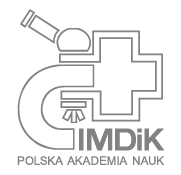 INSTYTUT SLAWISTYKI PAN
INSTYTUT SLAWISTYKI PAN
 SIEĆ BADAWCZA ŁUKASIEWICZ - INSTYTUT TECHNOLOGII MATERIAŁÓW ELEKTRONICZNYCH
SIEĆ BADAWCZA ŁUKASIEWICZ - INSTYTUT TECHNOLOGII MATERIAŁÓW ELEKTRONICZNYCH
 MUZEUM I INSTYTUT ZOOLOGII POLSKIEJ AKADEMII NAUK
MUZEUM I INSTYTUT ZOOLOGII POLSKIEJ AKADEMII NAUK
 INSTYTUT BADAŃ SYSTEMOWYCH PAN
INSTYTUT BADAŃ SYSTEMOWYCH PAN
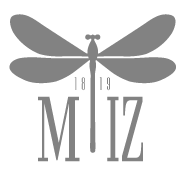 INSTYTUT BOTANIKI IM. WŁADYSŁAWA SZAFERA POLSKIEJ AKADEMII NAUK
INSTYTUT BOTANIKI IM. WŁADYSŁAWA SZAFERA POLSKIEJ AKADEMII NAUK
